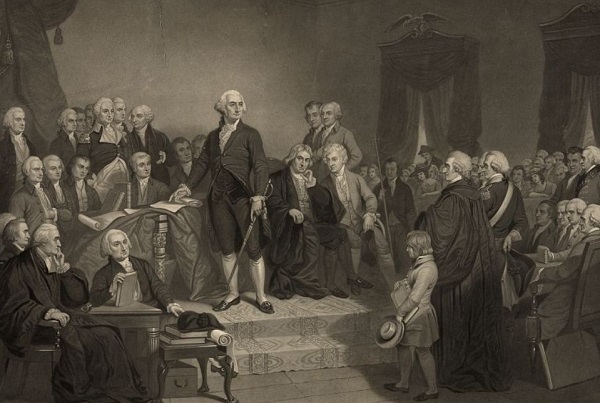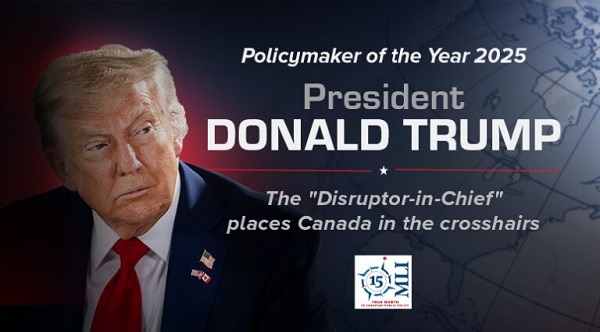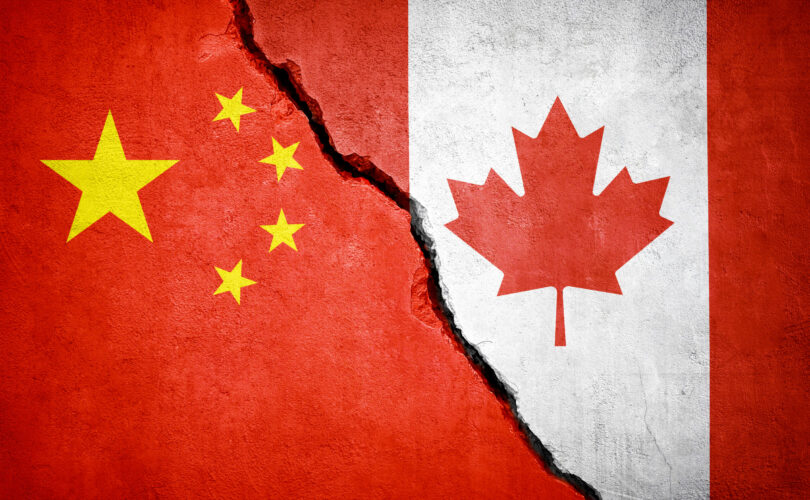Opinion
The American Experiment Has Gone Down In Flames

 From the Daily Caller News Foundation
From the Daily Caller News Foundation
What are we to do about it?
In the late eighteenth century, a group of unusually enlightened men gathered to plot rebellion against the most powerful military power of the day. Their grievances were many, set down in the Declaration of Independence. This storied document was many things, but above all it was a cry of rebellion against tyranny: against the arbitrary, capricious and unwelcome rule of the English over the colonies. It was a cry for liberty.
Against all odds, their rebellion succeeded and, a few years later, they met once again to devise a form of government that would be strong enough to see to those things that only government can do, such as military defense and the enablement of trade between the states. They were, however, leery of the dangers of tyranny, and so they crafted a unique form of government: a federal republic, with power dispersed among the several states, and numerous checks and balances to prevent abuse.
It was a noble experiment, and it served us well for centuries, but it is essential that we understand that this experiment has now failed in its primary purpose: to secure our liberties and to forestall tyrannical rule.
The evidence of this failure is indisputable to anyone with eyes to see. Unelected bureaucrats can impose their will on the citizenry in a way that so far exceeds the arbitrary and capricious rule of the English as to stagger the imagination.
They are imposing upon us regulations to all but outlaw vehicles powered by fossil fuels. They have decreed that a woman can become a man, and a man can become a woman, with utter disregard for biological reality.
They have colluded with the internet oligarchs to censor dissent and to silence their political opponents. They are using the mechanisms of law enforcement to protect their friends and to persecute their enemies.
The intelligence services are spying on Americans, and the FBI looks more and more like the secret police with every passing day. I am afraid of my government; I fear the knock on the door in the middle of the night. The grievances listed in the Declaration of Independence look trifling by comparison.
If the Democrats get their way, it will get even worse. They have made it clear that they intend to undo the system of checks and balances that have kept tyrants at bay for centuries. They will eliminate the Senate filibuster.
They will pack the Supreme Court and turn it into something like the Soviet Politburo, an organ of political power unaccountable to the people with absolute authority over every aspect of life. They will continue to push for non-citizen voting rights, allowing millions of illegal immigrants to vote in key local and state elections.
And, perhaps worst of all, power will be further centralized in Washington under the Democrats, who will willingly crackdown on local and state governments that don’t adopt their left-wing vision. In short, a form of absolute tyranny will be established.
Our constitution was designed to prevent this from happening. It is time for us to recognize that our experiment in self-rule has failed, and that we must do something about it before it is too late.
How did we get here? It all starts with federal money. Money is, and always has been, a profoundly corrupting influence in government. This has been true throughout history, going back to the Romans and even before.
Money is power. Money is control. Money gives you the ability to reward your friends and punish your enemies. Federal money has become a lever used by the bureaucrats to impose their will on state and local government, emasculating the federal system.
The Biden administration is giving away trillions of dollars in public funds to support its allies and to buy votes with the money they’ve taken from us. But no matter how many trillions of dollars they fritter away, it’s never enough, and they are on the verge of spending the country into bankruptcy. The system they have constructed will inevitably collapse, and take us down with it.
What then shall we do? How can we reclaim our lost freedom and save ourselves from the coming tyranny?
To do this, we need to be as bold as our opposition. They have stated that the American system is to be burned to the ground and replaced with something new. I agree, in part. Yes, burn it to the ground — but replace it instead with something old: the Federal Republic the founders intended us to have. This will require a massive — and I mean massive — reduction in the size and the scope of the government, and a return to its stated purpose, as eloquently laid out in the Preamble to the Constitution of the United States:
“We the People of the United States, in Order to form a more perfect Union, establish Justice, insure domestic Tranquility, provide for the common defence, promote the general Welfare, and secure the Blessings of Liberty to ourselves and our Posterity, do ordain and establish this Constitution for the United States of America.”
This, and no more.
Craig W. Stanfill (@craigwstanfill) is a computer scientist, software entrepreneur, and the author of the AI Dystopia science fiction series.
The views and opinions expressed in this commentary are those of the author and do not reflect the official position of the Daily Caller News Foundation.
Digital ID
The Global Push for Government Mandated Digital IDs And Why You Should Worry

From StosselTV
Countries all over the world are imposing digital IDs. They tie your identity to everything you do. Spain’s Prime Minister wants “An end to anonymity online!”
Tech privacy expert Naomi Brockwell @NaomiBrockwellTV warns that’s dangerous. “Privacy is not about hiding,” she tells Stossel TV producer Kristin Tokarev. “It’s about an individual’s right to decide for themselves who gets access to their data. A Digital ID… will strip individuals of that choice.”
The new government mandated digital IDs aren’t just a digital version of your driver’s license or passport. “It connects everything,” Brockwell explains. “Your financial decisions, to your social media posts, your likes, the things that you’re watching, places that you’re going… Everything you say will be tied back to who you are.”
And once everything runs through a single government ID, access to services becomes something you need permission for. That’s already a reality in China where citizens are tracked, scored, and punished for “bad” behavior.
Brockwell warns the western world is “skyrocketing in that direction.” She says Americans need to push back now.
———
To make sure you receive the weekly video from Stossel TV, sign up here: https://www.johnstossel.com/#subscrib...
———
International
China Stages Massive Live-Fire Encirclement Drill Around Taiwan as Washington and Japan Fortify

Taiwan says 89 Chinese military aircraft and 28 PLA Navy and coast guard vessels surged into the island’s air and maritime approaches.
Following massive military sales from Washington to Taiwan and rapidly scaled defensive preparations from Japan, Beijing on Monday launched a sweeping show-of-force including live-fire activity around Taiwan.
The encirclement-style operation brought 89 Chinese military aircraft and 28 PLA Navy and coast guard vessels into the waters and skies around the island, one of the heaviest single-day tallies reported in more than a year.
Taiwan’s Presidential Office condemned the operation as a “unilateral provocation” that destabilizes regional peace, while stressing that Taiwan’s security agencies had “complete situational awareness” and had made preparations. Taiwan’s Ministry of National Defense said it activated an emergency response posture and conducted immediate readiness drills.
Beijing, for its part, framed the action as a warning—an operation the PLA’s Eastern Theater Command dubbed “Justice Mission 2025,” involving the army, navy, air force, and rocket force, with designated zones for live-fire activity and sea-and-airspace restrictions.
Global coverage described the drills as rehearsing the mechanics of isolation: blockade-style pressure against key approaches and ports, integrated sea-air patrols, and “deterrence” aimed at what the PLA calls “external interference.”
In a statement circulated by former Taiwanese foreign minister Joseph Wu, now head of the nation’s national security council, the message from Taipei was readiness to deploy force.
“As China ramps up military threats against Taiwan, our armed forces are conducting Rapid Response Exercises in response,” Wu stated Monday morning. “We remain resolute and unafraid. We’ll defend our sovereignty and democracy at all times.”
Across international coverage, analysts assessed Beijing’s actions as escalation through rehearsal, designed to demonstrate a capacity to encircle Taiwan, with live-fire elements and disruption to regional routes. Coverage also emphasized the “stern warning” language aimed at “Taiwan independence” forces and foreign actors, and Taiwan’s elevated alert posture.
The choreography of this operation matters as much as the raw numbers.
The PLA appears to be practicing the operational geometry of denying outside forces access—the kind of posture meant to complicate U.S. and allied intervention in a blockade or assault scenario. That emphasis has been widely noted in contemporaneous coverage, including reporting that the Eastern Theater Command’s messaging explicitly framed the drill as “deterrence” against “external interference.”
This helps explain why the drill lands amid a knot of accelerating pressures.
A number of analysts speculated that Washington’s major arms package and Japan’s “re-militarization”—Tokyo’s rapid defense buildup in response to Beijing’s expanding military footprint—now feed into an escalating drill cycle in which China aims to demonstrate that outside support can be deterred, delayed, or priced prohibitively high.
One clear trigger is the Trump administration’s newly announced $11.1 billion arms package for Taiwan, which Beijing cast as proof of U.S. “interference.”
Another is Japan.
Regional reporting and analysis have framed the drill as a warning shot aimed not only at Taipei but at the alliance architecture around it—especially as Japanese leaders and planners speak more openly about a “Taiwan contingency” and expand defense spending and capabilities that Beijing portrays as destabilizing.
A third is the longer arc Beijing itself has helped set.
U.S. officials have repeatedly stated their assessment that Xi Jinping has directed the PLA to be capable of taking Taiwan by force by 2027—a milestone that continues to shape planning assumptions across the region.
In reporting The Bureau gathered during a September 2023 visit to Taiwan, Taiwanese military experts and officials warned that Beijing’s pressure campaign had reached a new plateau: Chinese aircraft and vessels were crossing into—and remaining in—Taiwan’s territory longer, in actions they described as cognitive warfare designed to erode the public’s will to resist.
“China makes many excuses to conduct military exercises around Taiwan, and I don’t think this is only political,” said Dr. Tzu-Chieh Hung of the Institute for National Defense Security Research, a think tank funded by Taiwan’s government. “I think they are expanding the area of their military operations.”
“We think they are trying to create a new normal, when we will become numb to their actions, and make it a fait accompli,” another senior Taiwanese official told The Bureau.
Those warnings sit directly beneath Monday’s encirclement-style operation. Beyond the raw tallies—89 aircraft and 28 PLA Navy and coast guard vessels—Taiwan’s defense community sees a pattern of repeated rehearsals that stretch time, distance, and ambiguity, steadily conditioning the region to accept blockade-style actions as irreversible.
Yet the fatalism that Taiwan cannot be defended has not been the conclusion in major U.S. war-game work—and Washington’s $11-billion Taiwan arms package signals an intent to strengthen deterrence.
Back in 2023, a widely cited wargaming study by the Center for Strategic and International Studies found Taiwan could repel a Chinese invasion—if Taiwan is prepared to fight immediately, and the United States and Japan move fast to deliver overwhelming air and missile firepower against the fleets that would attempt a blockade and landing.
“There is no question, two years ago most people would have said China has the ability to conquer Taiwan in a fait accompli,” Mark Cancian, one of the study’s authors, told The Bureau in 2023. “But we showed that is not true.”
“The Chinese defensive bubble at the start of the war is so strong, that Taiwan needs what it has to fight with for the first month or two,” Cancian said. “And the United States has to participate en masse and quickly. Japan must at least provide base capacity for U.S. forces, and Taiwan must defend itself.”
-

 Digital ID1 day ago
Digital ID1 day agoCanadian government launches trial version of digital ID for certain licenses, permits
-

 Alberta1 day ago
Alberta1 day agoAlberta Next Panel calls to reform how Canada works
-

 International1 day ago
International1 day agoGeorgia county admits illegally certifying 315k ballots in 2020 presidential election
-

 Agriculture2 days ago
Agriculture2 days agoEnd Supply Management—For the Sake of Canadian Consumers
-

 Business1 day ago
Business1 day agoThe “Disruptor-in-Chief” places Canada in the crosshairs
-

 Artificial Intelligence1 day ago
Artificial Intelligence1 day agoUK Police Pilot AI System to Track “Suspicious” Driver Journeys
-

 Energy1 day ago
Energy1 day ago‘The electric story is over’
-

 International1 day ago
International1 day agoWorld-leading biochemist debunks evolutionary theory








